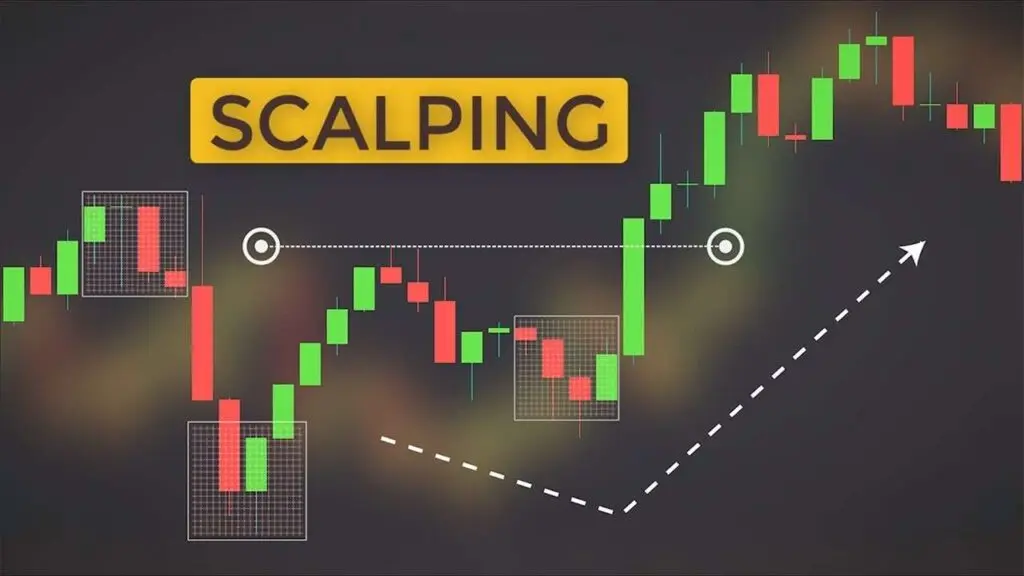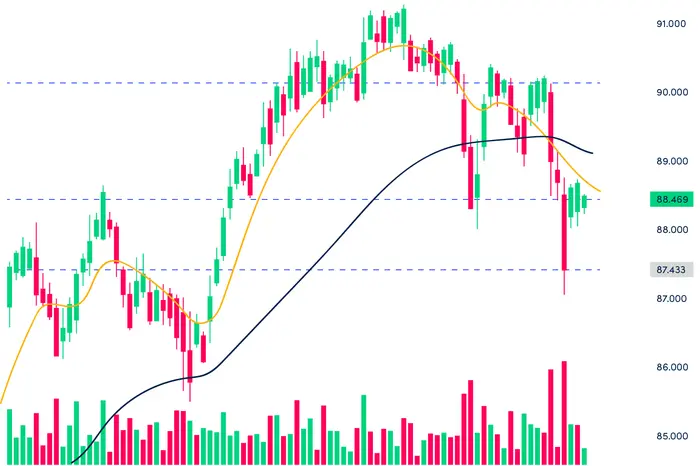Choosing the right trading strategy in the fast-paced world of cryptocurrency can be challenging.
Two popular methods, scalping and swing trading, offer different approaches to making profits.
You need to examine your goals, time commitment, and risk tolerance to decide which strategy aligns best with your needs.
Scalping focuses on making quick, high-frequency trades to capture small price changes, while swing trading seeks to profit from medium-term trends over days or weeks.
Both strategies offer unique advantages.
Scalping requires constant attention and quick decision-making, making it ideal for active traders willing to spend their day watching charts.
On the other hand, swing trading allows you to step back and let your trades develop over a longer timeframe, making it a better fit if you prefer less frequent trading.
Deciding between these strategies often depends on your lifestyle and trading goals.
If you thrive in high-pressure situations and enjoy real-time trading, scalping might be more suitable.
Conversely, swing trading may appeal to those who prefer analyzing broader trends without the constant pressure of immediate market shifts.
Understanding Crypto Options

Crypto options are financial contracts that give you the right, but not the obligation, to buy or sell a cryptocurrency at a predetermined price before a certain date.
These contracts come in two types: call options and put options.
A call option allows you to buy a crypto asset, while a put option allows you to sell a crypto asset.
Options provide flexibility in trading strategies, allowing you to hedge investments or speculate on market movements.
With options, you can potentially profit regardless of whether the market moves up, down, or sideways.
This flexibility can be especially valuable in the volatile crypto market.
Key Terms:
- Strike Price: The price at which you can buy or sell the underlying asset.
- Expiration Date: The last date on which the option can be exercised.
Options can be beneficial for managing risk.
By paying a premium, you can protect your crypto investments from large losses. This premium is the cost of the option itself.
In return, you get a chance to capitalize on significant price movements without the full exposure of owning the asset directly.
Trading crypto options requires careful analysis.
You’ll need to understand market trends and price patterns.
Many traders use technical indicators and charts to guide their decisions.
Whether you’re scalping for quick gains or holding positions longer with a swing strategy, options provide a versatile tool in your crypto arsenal.
Overview of Scalping in Crypto Trading

Scalping in crypto trading is a short-term strategy. It focuses on quick trades to take advantage of small price movements.
You aim to make many trades in a day, capturing small profits regularly.
The main goal is to exploit slight price changes in the market.
This requires close monitoring of the market. You need to be alert and ready to act quickly.
Scalping involves using technical analysis. You rely on charts, patterns, and indicators.
This helps you predict price movements and decide when to enter or exit trades.
It’s important to have a stable internet connection. Quick response time is crucial. Delays can lead to missed opportunities or losses.
You often look for assets with high liquidity. This ensures you can enter and exit positions easily. In crypto, popular coins like Bitcoin and Ethereum are common choices.
Your profits per trade might be small, but they can add up.
It’s essential to manage risk. Using stop-loss orders helps to protect against significant losses.
Basics of Swing Trading in Cryptocurrency Markets
Swing trading in cryptocurrency markets involves holding coins for a longer period than day trading, usually from a few days to several weeks.
The goal is to capitalize on price changes or “swings.” Unlike scalping, swing trading does not need constant monitoring, as trades are based on larger market trends.
Key Steps for Swing Trading:
- Identify Trends: Look for cryptocurrencies that are trending upward or downward. Use charts and technical analysis to spot these trends.
- Choose Entry Points: Decide when to buy based on signals such as price patterns or technical indicators like moving averages.
- Set Exit Points: Plan your exits by setting price targets or using stop-loss orders to manage risk.
Swing trading requires patience and the ability to understand market trends.
It’s usually less stressful than more rapid trading methods like scalping.
Advantages:
- Lower transaction costs due to fewer trades.
- Potentially high returns if market trends are correctly predicted.
Challenges:
- Market can shift unexpectedly, leading to losses.
- Requires an understanding of market analysis techniques and tools.
Keeping an eye on market news and developments is crucial—sometimes market events can affect the value of your holdings.
Consider using a practice account to test your strategies before committing real money.
Comparing Scalping and Swing Trading Strategies
Scalping and swing trading are two popular methods for trading cryptocurrencies. Each strategy has its own unique approach, benefits, and challenges.
Scalping involves making many trades throughout the day to capitalize on small price changes. You hold positions for a very short time, sometimes just minutes or seconds. This requires a lot of attention and quick decision-making. If you enjoy fast-paced trading, scalping might be exciting for you.
Swing trading takes a different approach. You hold positions for a few days to several weeks. This strategy aims to profit from larger market trends.
Swing trading often involves less stress than scalping since you don’t need to monitor the market constantly. It suits traders who prefer to take their time to analyze trends.
Here are some key differences:
| Feature | Scalping | Swing Trading |
|---|---|---|
| Time Frame | Seconds to minutes | Days to weeks |
| Trade Frequency | High, many trades per day | Lower, fewer trades per week |
| Market Focus | Immediate price changes | Longer-term trends |
| Stress Level | High, requires focus and stamina | Lower, more relaxed approach |
Key Considerations for Crypto Options Traders
Crypto options trading requires careful thought about time commitment, risk management, profit potential, and different methods for market analysis. Each of these is essential in helping you find the trading style that fits your goals.
Time Investment
Scalping and swing trading demand different levels of time commitment.
If you choose scalping, you will need to regularly monitor the market, often making quick decisions throughout the day. This style fits you if you have time to watch market movements closely.
Swing trading, on the other hand, is better suited if you prefer less frequent market checks.
Your trades last for days or even weeks, meaning you don’t have to be constantly online. This gives you more freedom to focus on other activities.
Risk Management
Managing risk effectively is crucial.
In scalping, you make numerous small trades, which means smaller profits but with frequent trading. This method often requires tight stop-loss orders to minimize losses from sudden price changes.
Swing trading involves holding positions longer, leading to potentially larger gains or losses.
You must be prepared to face market volatility, using strategies like trailing stops or diversification to protect your investments.
Profit Potential
Profit potential differs significantly between scalping and swing trading.
Scalping focuses on small but numerous gains over a short period. This approach can accumulate significant profits but needs great consistency and skill.
Swing trading aims for larger profits over longer periods. This method may provide substantial profit with fewer trades, especially when you can correctly predict a trend over days or weeks.
Assess your risk tolerance and market knowledge before deciding which aligns with your financial goals.
Market Analysis Techniques
Both trading styles rely heavily on market analysis, but the techniques you use may vary.
Scalping often requires technical analysis tools like chart patterns, volume indicators, and moving averages to catch short-term price movements.
Swing traders rely more on a combination of technical and fundamental analysis.
This might include analyzing longer-term charts, economic indicators, and news that could impact the cryptocurrency markets.
Understanding these techniques can help you choose the best entry and exit points.
Technical Analysis in Trading

When trading crypto options, technical analysis can help you make informed decisions. This method involves examining price charts and market data to identify patterns and trends.
One useful tool is the Candlestick Chart. These charts display price movements in a specific period. You can see the opening, closing, high, and low prices in each candlestick.
Indicators and Patterns
Some common indicators are the Moving Average, Relative Strength Index (RSI), and Bollinger Bands.
These tools help you understand market conditions. Patterns like Head and Shoulders or Double Tops indicate potential reversals or continuations.
Support and Resistance Levels
Support levels are points where a falling price might stop and bounce back up. Resistance levels, on the other hand, are where rising prices might start to fall.
Identifying these levels can be important for setting entry and exit points.
Trend Lines
Drawing trend lines can show you the general direction of the market. An upward trend suggests buying opportunities, while a downward trend suggests potential selling points.
Trading Volumes
Volumes can indicate the strength of a trend. High volume often suggests that a significant price move is likely to continue.
Trading Psychology and Discipline
In crypto options scalping and swing trading, keeping a clear head and firm discipline are crucial.
Staying calm during trades helps with smart decisions, and waiting for the right moment can be key to success.
Emotional control and the ability to patiently make decisions are vital for any trader looking to thrive.
Emotional Control
Emotional control is about keeping feelings in check when trading.
The crypto market is unpredictable, and quick price shifts can spark stress.
Staying calm allows you to judge the market fairly. Reacting based on fear or excitement can lead to major mistakes.
To maintain emotional balance, practice mindfulness.
Take regular breaks from screens. Set predefined entry and exit points to avoid impulsive decisions.
These practices help you stick to your plan and avoid rushing into bad trades.
Patience and Decision-Making
Patience is essential for both scalping and swing trading.
It involves knowing when to act and when not to. Rushing can lead to errors.
Instead, waiting for clear signals ensures better results.
For scalping, waiting for the perfect moment in short-term trades is crucial.
In swing trading, patience may involve holding positions over days or weeks until trends fully develop.
Keep track of market trends and data. A consistent strategy is key for disciplined decision-making.
This helps you act decisively at the optimal moment.
Strategic Tools for Options Scalping
When engaging in options scalping, having the right tools can make a significant difference.
Speed and accuracy are crucial.
Real-Time Data Feeds are essential.
These feeds provide up-to-the-second information on price movements.
Being quick means you can take advantage of minute-by-minute changes.
An options trading platform with rapid execution is also key.
Make sure your platform can handle a high volume of trades without delay.
Charting software helps you spot trends quickly.
Look for patterns or indicators that suit your scalping strategy.
Popular choices include Bollinger Bands and Moving Averages.
You should consider using alerts.
Alerts can notify you of specific price movements.
This helps you react instantly without staring at the screen all day.
Create a list of preferred markets or assets.
Staying focused helps avoid distractions and lets you specialize in specific sectors that match your strategy.
Consider tools for risk management.
Set stop-loss and take-profit levels.
This minimizes losses and locks in gains automatically.
Effective Swing Trading Approaches
Swing trading in the crypto world involves holding positions for several days to take advantage of market “swings.” Understanding different strategies can help you increase your success.
Price Trend Recognition is crucial.
Look for patterns and study charts to spot rising and falling trends.
This helps you decide when to jump in or out of trades.
Developing a solid entry and exit strategy is vital.
Set entry points where you see opportunity and plan exit points to lock in profits or minimize losses.
Technical Indicators like moving averages and relative strength index (RSI) can guide your decisions.
These tools provide insights into market conditions and potential price movements.
Risk management is a key part of any successful swing trading approach.
Never risk more than a small percentage of your portfolio on a single trade.
This protects you from significant losses.
Create a trading plan with clear goals and stick to it.
Having predefined steps helps maintain discipline and prevents emotional decisions.
Staying informed about market news can affect your trades.
Economic events or regulations may shift trends, so keep an eye on relevant updates.
Keeping a trading journal can also be beneficial.
Write down your trades, strategies, and outcomes.
Reviewing this information helps identify what works and what doesn’t, improving future strategies.
Legal and Regulatory Considerations
When trading crypto options, it’s crucial to be aware of the legal and regulatory landscape.
Regulations vary widely across countries, so you should check the specific rules in your region.
Some countries have strict regulations, while others have a more relaxed approach to crypto trading.
Licensing is an important factor.
Make sure the platform you use has the necessary licenses.
This ensures that the platform operates under legal standards and offers a level of consumer protection. Unlicensed platforms might be riskier.
Know Your Customer (KYC) and Anti-Money Laundering (AML) procedures are common in the crypto world.
You should be prepared to verify your identity.
This might involve submitting documents like a passport or a driver’s license.
These steps aim to prevent illegal activities, such as money laundering.
Tax implications are another critical consideration.
You should be aware of how crypto gains are taxed in your region.
Tax payments on profits may be required, and failing to declare these earnings could lead to penalties.
It’s wise to consult a tax professional if you’re uncertain about your obligations.
Some regions have restrictions on trading certain types of crypto assets.
These restrictions can affect which trading strategies you can legally pursue.
Understanding these limits helps you avoid penalties while making well-informed decisions.
Portfolio Diversification and Asset Allocation
When dealing in crypto options, paying attention to portfolio diversification helps manage risk.
You spread your investments across different assets, reducing the impact of any one asset underperforming.
Scalping means frequent, quick trades.
This strategy can lead to concentrated positions in your portfolio.
If you heavily engage in scalping, consider balancing with longer-term approaches.
Swing traders hold positions for days or weeks, capturing broader market trends.
This longer time frame offers a chance for greater diversification in holdings.
Asset allocation plays a crucial role in managing your crypto investments.
Consider allocating funds across various types of cryptos. For example:
| Asset Type | Example |
|---|---|
| Major Cryptos | Bitcoin, Ethereum |
| Altcoins | Cardano, Solana |
| Stablecoins | USDT, USDC |
It’s also vital to decide how much of your portfolio to dedicate to options trading.
Balance it with other forms of investments based on your risk tolerance and financial goals.
You can follow a 60/40 approach: 60% in core assets like Bitcoin and 40% in smaller altcoins or trading activities.
Adjust this allocation based on market conditions and your personal risk level.
Develop a habit of reviewing your portfolio regularly.
Stay informed on market trends and adjust your strategy as needed.
This ensures your investment strategy remains aligned with your financial goals.
Frequently Asked Questions
In the realm of cryptocurrency options trading, scalping and swing trading offer different strategies. These methods differ in time frames, risk and reward, and suitability for traders at various experience levels.
What are the key differences between scalping and swing trading in the cryptocurrency market?
Scalping involves making many quick trades in a single day, often requiring constant market monitoring. Swing trading, in contrast, focuses on longer-term strategies, holding positions for days or even weeks. Scalping seeks to profit from small price changes, while swing trading aims to capture larger market trends.
How do risk and reward profiles compare between scalping and swing trading strategies in crypto trading?
Scalping typically carries higher risks due to the rapid execution of trades and smaller profit margins per trade. However, the potential for frequent small gains is higher. Swing trading has lower trading frequency, often leading to fewer trades but with a higher reward potential per trade due to longer holding periods.
Which trading strategy tends to be more profitable for cryptocurrency options: scalping or swing trading?
Profitability depends on market conditions and a trader’s skills. Scalpers may profit from volatility by executing many trades. Swing traders might gain from identifying and riding longer-term trends. Each strategy offers profit opportunities but requires different skills and market conditions for success.
How do time frames for holding trades differ between crypto scalping and swing trading approaches?
Scalping focuses on very short time frames, often seconds to minutes per trade. This requires high attention and quick decision-making. Swing trading uses extended periods, typically holding positions for several days to weeks. This allows traders to analyze broader market trends and make decisions with less immediate pressure.
What factors should a trader consider when deciding between scalping and swing trading for cryptocurrency options?
Consider your availability to monitor the market, risk tolerance, and experience level. Scalping suits those who can watch the market closely and manage fast-paced trades. Swing trading may be more suitable if you prefer comprehensive analysis and have less time for constant monitoring.
Can beginners in crypto options trading successfully execute scalping or should they start with swing trading?
Beginners might find swing trading more accessible as it requires fewer trades and allows for more time to research and learn.
Scalping demands quick reactions and an in-depth understanding of market mechanics, which could be challenging for those new to the market.
Start with swing trading, and progressively gain experience if interested in scalping.
Explore these crypto option trading exchanges:
